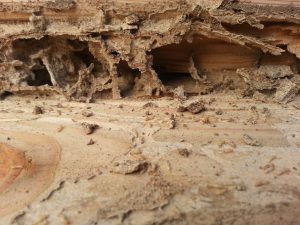Prior to Hansen Pole Buildings’ client’s plans being sealed by our third-party engineers, their preliminary plans are uploaded for client review through a login. While review goal is to make certain everyone is working from a same left and ensure doors and windows are properly located, it does trigger some interesting discussions at times.
Here is a recent email received from one of our clients in Ohio:
“Just had the chance to look through the plans. Was surprised to see 4x6s on the corners of the main building. What is the rationale for that? If it’s simply cost savings, can I pay extra to have 6x6s in those 4 places?”
Here is my Pole Barn Guru response:
Prior to verifying the larger dimension (albeit weaker) member might work, this may prove valuable reading:
From the Hansen Pole Buildings Construction Manual:
Why might corner columns be smaller sized? Each building column carries a load equal to ½ distance to next column on each side! This means corner columns are carrying about ½ other column’s loads. Further, on an enclosed building, corner columns are braced in two directions by girts and wall steel (or other sidings).
 Why might a building have 4×6 columns, rather than 6×6? As mentioned in lumber defects section (Page 37), 4×6 lumber and 6×6 lumber are graded under different “allowable defect” categories. 4×6 material is held to much more stringent guidelines. As an example, if allowable defects from a 4×6 #2 grade, were applied to a 6×6, 6×6 would have to be graded as Select Structural. Conversely, if allowable defects from a 6×6 #2 grade were applied to a 4×6, 4×6 would be less than “utility” grade.
Why might a building have 4×6 columns, rather than 6×6? As mentioned in lumber defects section (Page 37), 4×6 lumber and 6×6 lumber are graded under different “allowable defect” categories. 4×6 material is held to much more stringent guidelines. As an example, if allowable defects from a 4×6 #2 grade, were applied to a 6×6, 6×6 would have to be graded as Select Structural. Conversely, if allowable defects from a 6×6 #2 grade were applied to a 4×6, 4×6 would be less than “utility” grade.
These allowable defect characteristics follow through to design values used for structural calculations. Without getting overly technical, 4×6 #2 Fb (fiberstress in bending) value is nearly double 6×6 #2 value.
As well as: https://www.hansenpolebuildings.com/2014/08/lumber-bending/
In the event you still wish a material change, please contact Materials@HansenPoleBuildings.com.
Post frame efficiency is achieved by every member and connection being checked and verified for ability to carry imposed loads. Software utilized by Hansen Pole Buildings and our third-party engineers verifies complete structural adequacy in all cases.
 “We would happy to provide some advice for this situation. Let me first say this is why we stress so much to inspect and inventory wood as they arrive up front. You are probably correct in your conclusion they came with the mites in the bundle. If the bundle would have been opened then we could have probably avoided your current situation.
“We would happy to provide some advice for this situation. Let me first say this is why we stress so much to inspect and inventory wood as they arrive up front. You are probably correct in your conclusion they came with the mites in the bundle. If the bundle would have been opened then we could have probably avoided your current situation.





